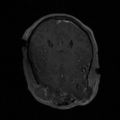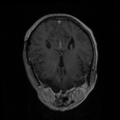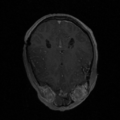Multimodality Image Registration for TBI
From NAMIC Wiki
Home < Multimodality Image Registration for TBI
Multimodality Image Registration for Traumatic Brain Injury (TBI)
Key Investigators
- Georgia Tech: Yifei Lou and Allen Tannenbaum
- UCLA: Micah Chambers, Andrei Irimia
Objective
- Understanding brain injury using (multimodal) deformable image registration
- Robust registrations inspire of topological changes (enforcing zero flow?)
- The algorithm is based on a viscous fluid model, which can handle larger deformable as compared to the B-spline type of methods
- CUDA-based implementation, which takes 1 min for 256x256x60
Approach, Plan
- Integration into Slicer3 Module
- Learn more about TBI and our data set from Micah (UCLA NA-MIC TBI DBP team member)
- Validate algorithm on additional TBI datasets from UCLA
Progress
- Learn more about TBI and ITK/Slicer
- Demonstrate the efficiency of my algorithm on TBI data
- Its failure in one registration case suggests us dividing 12 modalities into 2 subgroups and co-register within group
- plan to write a paper and integrate my algorithm into ITK/Slicer
References
1 Yifei Lou and Allen Tannenbaum. Multimodal Deformable Image Registration via the Bhattacharyya Distance. Submitted to IEEE Trans. Image Process. 2011
2 Yifei Lou, Xun Jia, Xuejun Gu and Allen Tannenbaum. A GPU-based Implementation of Multimodal Deformable Image Registration Based on Mutual Information or Bhattacharyya Distance. Insight Journal, 2011. [[1]]
Delivery Mechanism
This work will be delivered to the NAMIC Kit as a
- NITRIC distribution
- Slicer Module
- Built-in: NO
- Extension -- commandline: NO
- Extension -- loadable: NO



